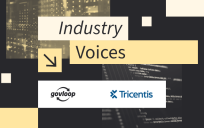For most agencies, cloud computing is a critical component of data center modernization. Deployed properly, it is a logical path toward greater efficiency, improved consistency and virtually limitless scalability. At the same time, determining where to use cloud — and what type of cloud resources to deploy — can be complicated. Here are some of the key issues:
Understanding your total cost of ownership. It’s tempting to move as much infrastructure and as many workloads to the cloud as quickly as possible, but that’s not always the right move. Instead, examine each resource individually. For example, if your storage infrastructure is end-of-life, it may make sense to consider cloud-based storage infrastructure. On the other hand, if your storage is in good shape but simply running out of room, it may make more economic sense, at least temporarily, to simply add more storage nodes. If the choice is to upgrade, it’s also important to evaluate whether that upgrade will take the agency further along the path toward modernization, and whether it makes sense from a total cost of ownership (TCO) perspective.
Making sure each application gets the resources it needs. Without understanding the options, it’s difficult to make the right decision. Knowing your options requires understanding the TCO of running an application or storing data in various environments.
Deciding which resources should move to the cloud. With the strong focus on cloud in government, the obvious answer may seem to be “yes,” but the real answer is “it depends.” Many agencies have no choice but to keep some resources on premises for security and privacy reasons. Others can choose what they want to move to the cloud, based on convenience, access requirements and economics. In most cases, the decision ends up being a mix of public cloud and on-premises, private cloud resources.
The Solution: Software-Defined, Hybrid and Hyperconverged
Most agencies get the best value from a hybrid approach to data center modernization — one that combines on-premises private cloud with public cloud resources. With this approach and the right technology and expertise backing it up, agencies can reduce costs and improve flexibility and scalability while making the best use of internal agency IT expertise.
Standardizing on a software-based hyperconverged infrastructure (HCI), which combines all elements of a traditional data center (storage, compute, networking and management) is a good option. Managing data center operations with software-defined processes helps agencies get the most out of both applications and infrastructure. In addition to automating deployment, operations, lifecycle management, patching and updating, it helps IT staff quickly determine which equipment might be under- or over-utilized.
“If you start with a software-defined platform, it’s much easier to move your workloads back and forth between locations without having to rename, relearn and refactor,” said Jake Bernier, a senior inside solutions architect with Connection.
To make the transition as smooth as possible, choose technology your IT staff already is familiar with. This can shorten the learning curve and get modernized data centers up and running more quickly and efficiently.
For example, a modern data center solution anchored by Dell EMC’s VxRail HCI solution running Intel Optane and managed by VMware’s VCloud Foundation suite would allow agency IT staff to hit the ground running because Dell EMC and VMware products are probably already part of the agency’s IT environment. This approach would allow staff to get up to speed very quickly so they can move workloads back and forth, automate deployment, ensure security and manage all components, but they can deploy and manage virtual machines and container-based workloads.
This article is an excerpt from GovLoop’s report, “Taking Data Center Modernization to the Next Level.” Download the full report here.





Leave a Reply
You must be logged in to post a comment.